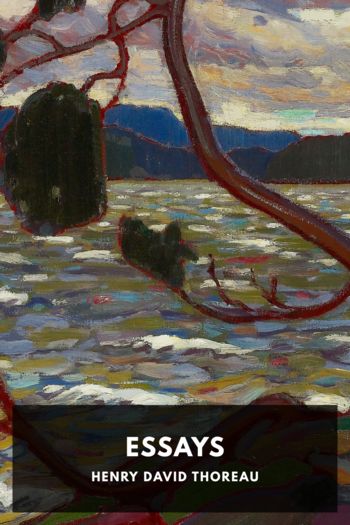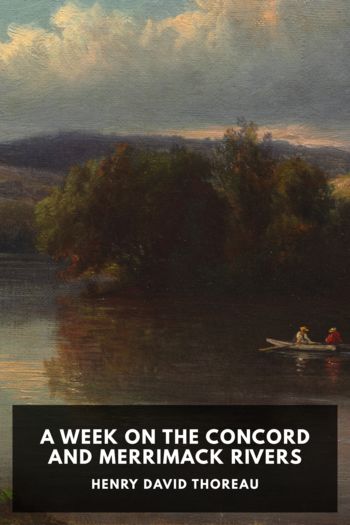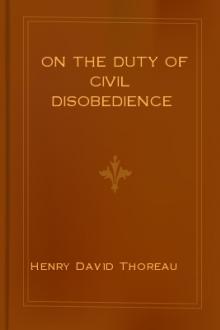Essays by Henry David Thoreau (feel good books .txt) 📕

Description
Though perhaps most famous for Walden, Henry David Thoreau was also a prolific essayist. Many of his essays touch on subjects similar to his famous book: long walks through nature, things found in moonlight that are invisible and unheard during the day, his preference for wild apples over domestic ones. In many ways he prefigured environmentalism, expressing his love for untouched nature and lamenting what the encroachment of man and cities were doing to it.
He also had strong opinions on many other subjects. One of his most famous essays, “On the Duty of Civil Disobedience,” was written as a result of his going to jail for refusing to pay several years’ worth of poll taxes. One of the primary reasons for his refusal was his holding the government in contempt for its support of slavery, and several of his other essays express support and admiration for John Brown, who thought to start a slave revolt when he attacked Harper’s Ferry in 1859.
Whether discussing trees in a forest, slavery, or the works of Thomas Carlyle, Thoreau’s essays are deeply personal and full of keen observations, often in poetic language. They give a sense of the man expressing them as being much more than the views being expressed.
Read free book «Essays by Henry David Thoreau (feel good books .txt) 📕» - read online or download for free at americanlibrarybooks.com
- Author: Henry David Thoreau
Read book online «Essays by Henry David Thoreau (feel good books .txt) 📕». Author - Henry David Thoreau
In the midst of their conversation, Joe suddenly appealed to me to know how long Moosehead Lake was.
Meanwhile, as we lay there, Joe was making and trying his horn, to be ready for hunting after midnight. The St. Francis Indian also amused himself with sounding it, or rather calling through it; for the sound is made with the voice, and not by blowing through the horn. The latter appeared to be a speculator in moose-hides. He bought my companion’s for two dollars and a quarter, green. Joe said that it was worth two and a half at Oldtown. Its chief use is for moccasins. One or two of these Indians wore them. I was told that, by a recent law of Maine, foreigners are not allowed to kill moose there at any season; white Americans can kill them only at a particular season, but the Indians of Maine at all seasons. The St. Francis Indian accordingly asked my companion for a wighiggin, or bill, to show, since he was a foreigner. He lived near Sorel. I found that he could write his name very well, Tahmunt Swasen. One Ellis, an old white man of Guilford, a town through which we passed, not far from the south end of Moosehead, was the most celebrated moose-hunter of those parts. Indians and whites spoke with equal respect of him. Tahmunt said that there were more moose here than in the Adirondack country in New York, where he had hunted; that three years before there were a great many about, and there were a great many now in the woods, but they did not come out to the water. It was of no use to hunt them at midnight—they would not come out then. I asked Sabattis, after he came home, if the moose never attacked him. He answered that you must not fire many times, so as to mad him. “I fire once and hit him in the right place, and in the morning I find him. He won’t go far. But if you keep firing, you mad him. I fired once five bullets, every one through the heart, and he did not mind ’em at all; it only made him more mad.” I asked him if they did not hunt them with dogs. He said that they did so in winter, but never in the summer, for then it was of no use; they would run right off straight and swiftly a hundred miles.
Another Indian said that the moose, once scared, would run all day. A dog will hang to their lips, and be carried along till he is swung against a tree and drops off. They cannot run on a “glaze,” though they can run in snow four feet deep; but the caribou can run on ice. They commonly find two or three moose together. They cover themselves with water, all but their noses, to escape flies. He had the horns of what he called “the black moose that goes in low lands.” These spread three or four feet. The “red moose” was another kind, “running on mountains,” and had horns which spread six feet. Such were his distinctions. Both can move their horns. The broad flat blades are covered with hair, and are so soft, when the animal is alive, that you can run a knife through them. They regard it as a good or bad sign, if the horns turn this way or that. His caribou horns had been gnawed by mice in his wigwam, but he thought that the horns neither of the moose nor of the caribou were ever gnawed while the creature was alive, as some have asserted. An Indian, whom I met after this at Oldtown, who had carried about a bear and other animals of Maine to exhibit, told me that thirty years ago there were not so many moose in Maine as now; also, that the moose were very easily tamed, and would come back when once fed, and so would deer, but not caribou. The Indians of this neighborhood are about as familiar with the moose as we are with the ox, having associated with them for so many generations. Father Rasles, in his Dictionary of the Abenaki Language, gives not only a word for the male moose (aianbé), and another for the female (hèrar), but for the bone which is in the middle of the heart of the moose (!), and for his left hind leg.
There were none of the small deer up there; they are more common about the settlements. One ran into the city of Bangor two years before, and jumped through a window of costly plate glass, and then into a mirror, where it thought it recognized one of its kind, and out again, and so on, leaping over the heads of the crowd, until it was captured. This the inhabitants speak of as the deer that went a-shopping. The last-mentioned Indian spoke of the lunxus or Indian devil (which I





Comments (0)